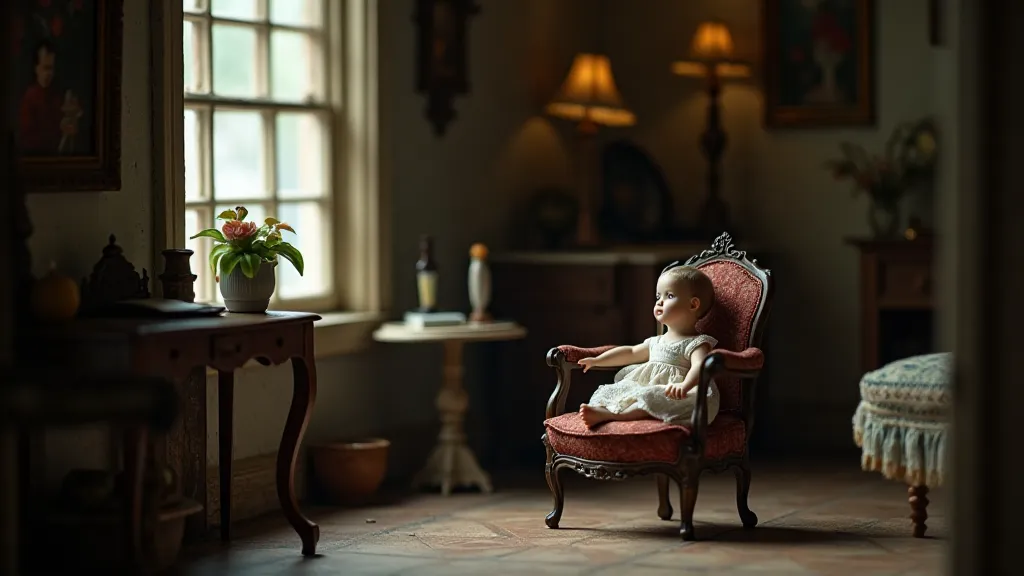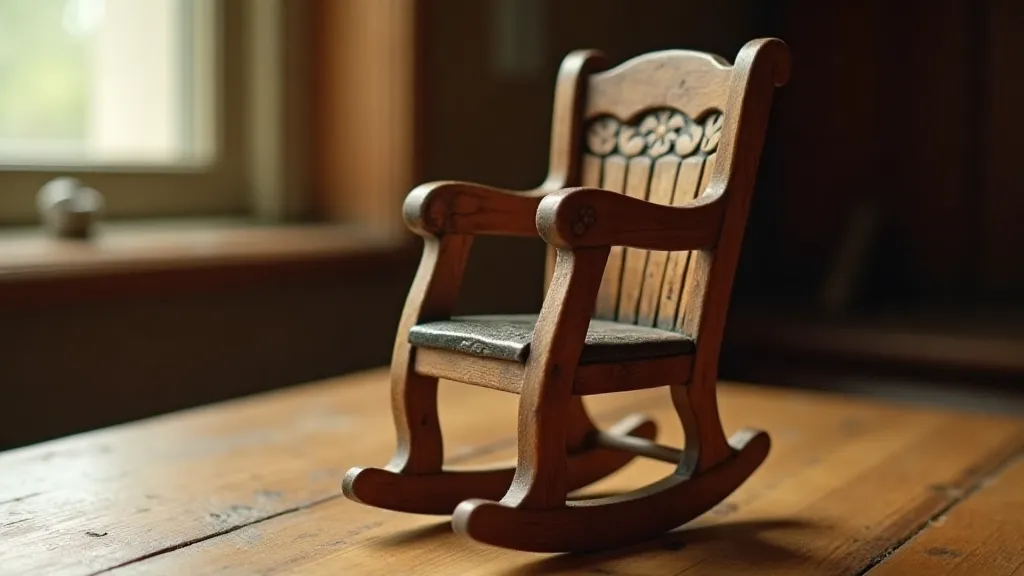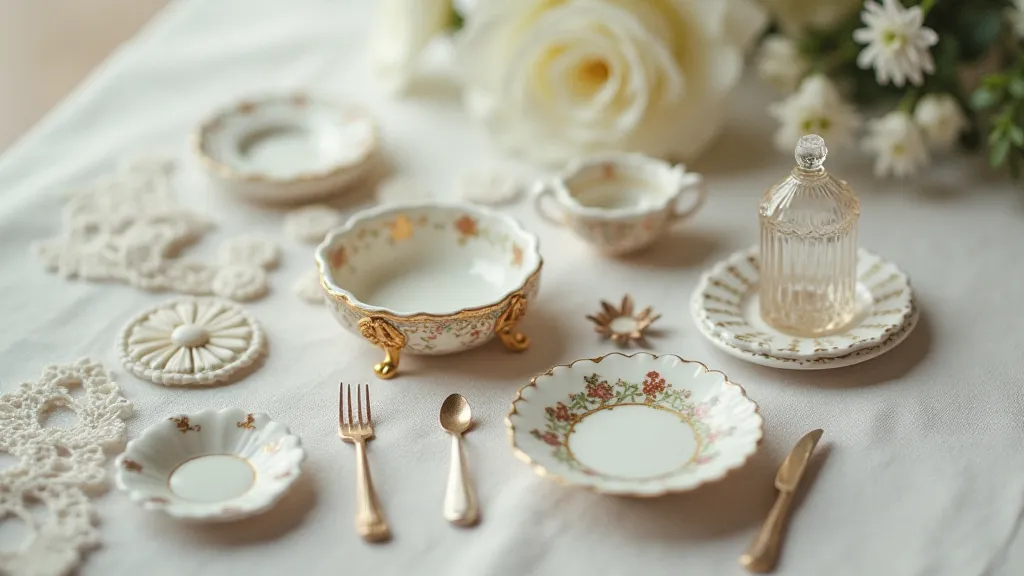Ghosts of Playhouses: Reconstructing the Worlds of Antique Dolls
There's a peculiar magic in holding an antique doll. It's not simply the feel of porcelain or the texture of aged fabric, but a sense of connection – a whisper of laughter, a fleeting glimpse into a life lived long ago. We marvel at their beauty, study their markings, and meticulously research their history. But what about the worlds they inhabited? The playhouses, the miniature landscapes, the carefully constructed environments that once nurtured their imagined lives? To truly understand antique dolls, we must delve into the ghosts of these playhouses, and reconstruct the worlds that shaped their stories.
My own fascination began with a single doll – a bisque-headed French beauty named Camille. She arrived in a battered cardboard box, missing an arm and dressed in faded remnants of what was likely a once-splendid gown. But it wasn't just the doll that captivated me; it was the tiny, meticulously painted wooden chair tucked beneath her. It was worn, chipped, and utterly charming. It sparked a question: who sat in that chair? What games were played? What stories were shared?

Reflections in Miniature: Social Norms and Childhood Aspirations
Dollhouses and miniature environments weren’t merely accessories to doll collecting; they were complex reflections of societal norms and childhood aspirations. During the Victorian era, the golden age of antique doll collecting, dollhouses mirrored the grand homes of the wealthy. They were painstakingly detailed reproductions, complete with miniature carpets, oil paintings, and even working fireplaces. A girl's dollhouse wasn't just a toy; it was a training ground for running a household. She learned about interior design, social etiquette, and the responsibilities of a homemaker through the meticulous arrangement and care of her miniature world.
The dolls themselves were often dressed in miniature versions of the clothing worn by their owners, further blurring the lines between reality and imagination. Consider the elaborately embroidered gowns of German bisque dolls versus the simpler, more practical clothing of American composition dolls. These differences in attire weren’t arbitrary; they reflected the economic and social realities of the girls who played with them. A wealthy girl might have a dollhouse brimming with opulent furnishings, while a girl from a working-class family might create a simpler, more imaginative world using found objects and handmade decorations. The choice of materials, too, speaks volumes. The careful consideration given to every detail – from the type of wood used for furniture to the fabrics chosen for upholstery – hints at a deeper investment in the play experience. Understanding these nuances can unlock a richer understanding of the lives intertwined with these cherished possessions. This attention to detail underscores how these miniature environments fostered not only imaginative play, but also a practical education in managing a household, a role many young girls were expected to fulfill.
The Craftsmanship Speaks Volumes
The craftsmanship involved in creating these miniature worlds is truly astonishing. The furniture wasn’t mass-produced; it was often handcrafted by skilled artisans, sometimes even by the girls' fathers or grandfathers. The attention to detail is remarkable – tiny doilies crocheted with painstaking care, miniature books with legible print, and miniature porcelain dishes painted with astonishing realism. Examine a close-up of a miniature fireplace and you're likely to find meticulously carved details and a surprisingly convincing imitation of flickering flames. These weren’t just toys; they were works of art, imbued with the love and ingenuity of their creators. Often, the very materials used—the mahogany, rosewood, or even simpler pine—offered clues about the family’s social standing and available resources. The lasting appeal of antique dolls lies not only in their beauty but also in the narrative they carry, the silent testament to the hands that crafted them and the children who loved them. Exploring the significance of these objects offers a fascinating window into the past, and provides insight into the emotional weight these dolls held for generations.
The materials used also tell a story. Mahogany, rosewood, and walnut were common choices for high-end furniture, while simpler dollhouses might be constructed from pine or even cardboard. Fabrics like velvet, silk, and linen were used for upholstery and draperies, while tiny scraps of lace and ribbon were repurposed to create miniature accessories. Even the stuffing used to plump up cushions and pillows reveals something about the era – horsehair, cotton batting, and kapok were all common choices. A careful collector learns to recognize these details, piecing together a richer understanding of the doll's history and the environment it occupied. The dedication to replicating even the most minute aspects of a full-sized home speaks to the importance placed on both aesthetics and functionality. These miniature worlds weren't merely decorative; they were learning environments, microcosms of the lives the young girls who played with them aspired to lead.

Beyond the Grand Estates: Imagination and Resourcefulness
While the opulent dollhouses of the wealthy capture our imagination, it’s important to remember that not all antique dolls lived in grand estates. Many girls created vibrant playhouses using whatever resources were available to them. Shoeboxes became castles, blankets became tents, and scraps of fabric were transformed into elaborate costumes. These imaginative creations were just as meaningful as their more lavish counterparts, demonstrating the power of childhood creativity and resourcefulness. The ability to transform ordinary objects into extraordinary playthings reveals a remarkable resilience and ingenuity, characteristics that resonate deeply with collectors and enthusiasts today. Often, the most cherished memories weren't tied to elaborate furnishings, but to the joy of collaborative storytelling and imaginative role-playing.
Think of a child using a discarded orange crate as the foundation for a miniature market, complete with tiny wooden produce stands and hand-painted signs. Or a young girl crafting a whimsical fairy garden using pebbles, moss, and twigs. These humble creations may not be as visually impressive as a Victorian mansion, but they represent the enduring spirit of play and the boundless capacity of children to transform the ordinary into the extraordinary. The stories embedded in these simple creations often hold more emotional weight than the most lavish display. For instance, understanding the historical context and societal norms that shaped these playhouses is crucial to appreciating the narrative embedded within these miniature worlds – a narrative that goes beyond mere aesthetics and delves into the heart of childhood aspirations. It’s a fascinating exploration that often reveals beyond the porcelain smile: unveiling the lives of the children who loved these dolls.
Restoration and the Reverence of the Past
When collecting antique dolls, and especially their associated play environments, restoration presents unique challenges. Replacing missing furniture is often impossible, so preserving what remains is paramount. A chipped miniature teacup is more than just a damaged object; it's a tangible link to the past, a testament to the countless tea parties that once took place in a child’s imagination. The value isn’t solely about perfection; it's about preserving the story, the echoes of play that resonate within each fragile piece. The importance of retaining these vestiges of the past lies in the intimate connection they foster with the children who once cherished them.
A careful approach is key. Cleaning should be gentle, using only mild detergents and soft cloths. Repairs should be undertaken with the goal of stability and preservation, rather than a restoration to "original" condition. Sometimes, leaving a visible repair – a tiny patch on a miniature rug, a carefully matched piece of wood replacing a missing chair leg – serves as a subtle reminder of the doll's journey through time. This approach is crucial, as it acknowledges the inherent fragility of these artifacts and honors the passage of time they have endured. The decision of whether or not to restore, and to what extent, is a deeply personal one, often guided by a profound sense of respect for the object’s history and significance. Sometimes, the most telling stories are not found in flawless perfection, but in the subtle imperfections that reveal the passage of time and the hands that once cared for these treasures. The emotional resonance of these objects is inextricably linked to their history, making thoughtful conservation paramount. It’s a process steeped in respect and understanding – a reverence for the past and a commitment to preserving its legacy. Recognizing the significance of these objects also touches upon the profound whispers of inheritance: the emotional weight of passed-down antique dolls.

The Legacy of Play
Collecting antique dolls is more than just acquiring beautiful objects; it’s about connecting with the past, understanding the social norms and childhood aspirations of previous generations. By reconstructing the worlds of these dolls – by studying their playhouses, their clothing, and the stories they represent – we gain a deeper appreciation for the enduring power of imagination and the profound legacy of play. Each chipped teacup, each faded ribbon, each carefully crafted miniature chair whispers a tale of laughter, dreams, and the enduring magic of childhood. And it’s our privilege to listen. Examining the careful attention to detail in these miniature environments also reveals fascinating insights into the cultural values and aesthetic preferences of the era. The seemingly trivial objects—the miniature furniture, the tiny accessories—provide a tangible link to a bygone era, offering glimpses into the lives of those who once inhabited it. This act of remembrance allows us to not only appreciate the beauty of these objects but also to gain a deeper understanding of the cultural context that shaped them. Furthermore, appreciating the aesthetics of these miniature worlds requires considering the broader context of the gaze of porcelain: unmasking nostalgia in doll collecting.





